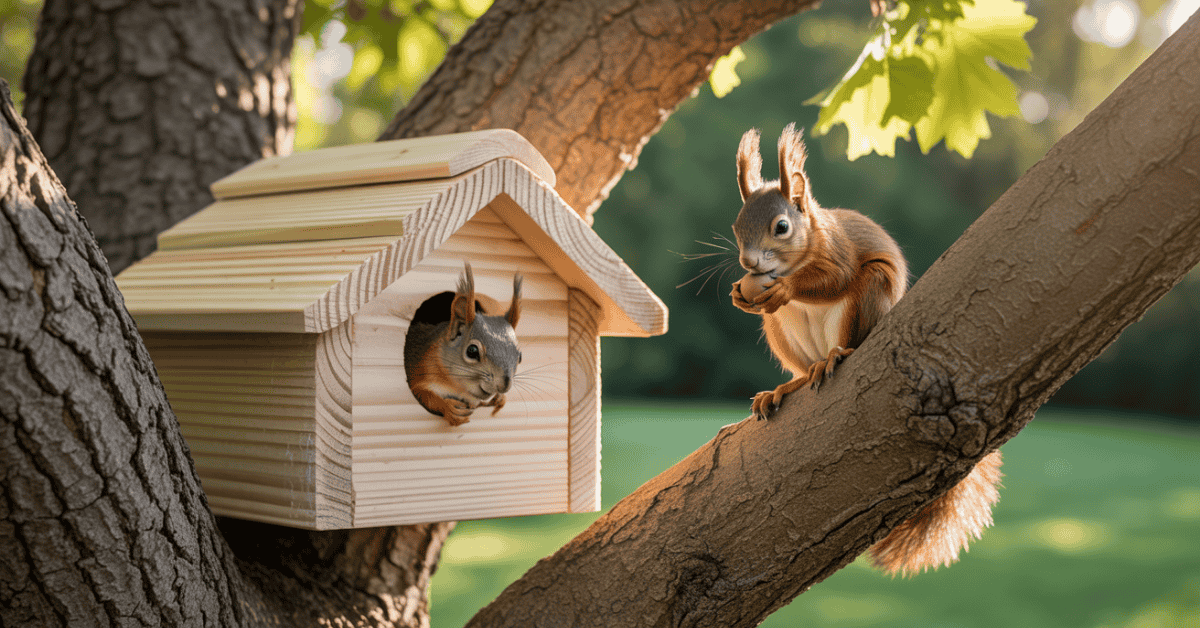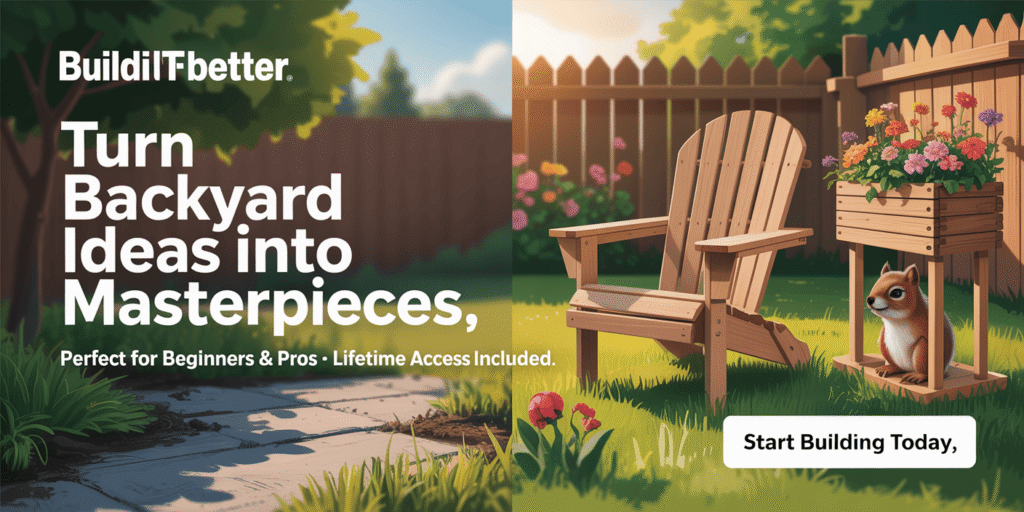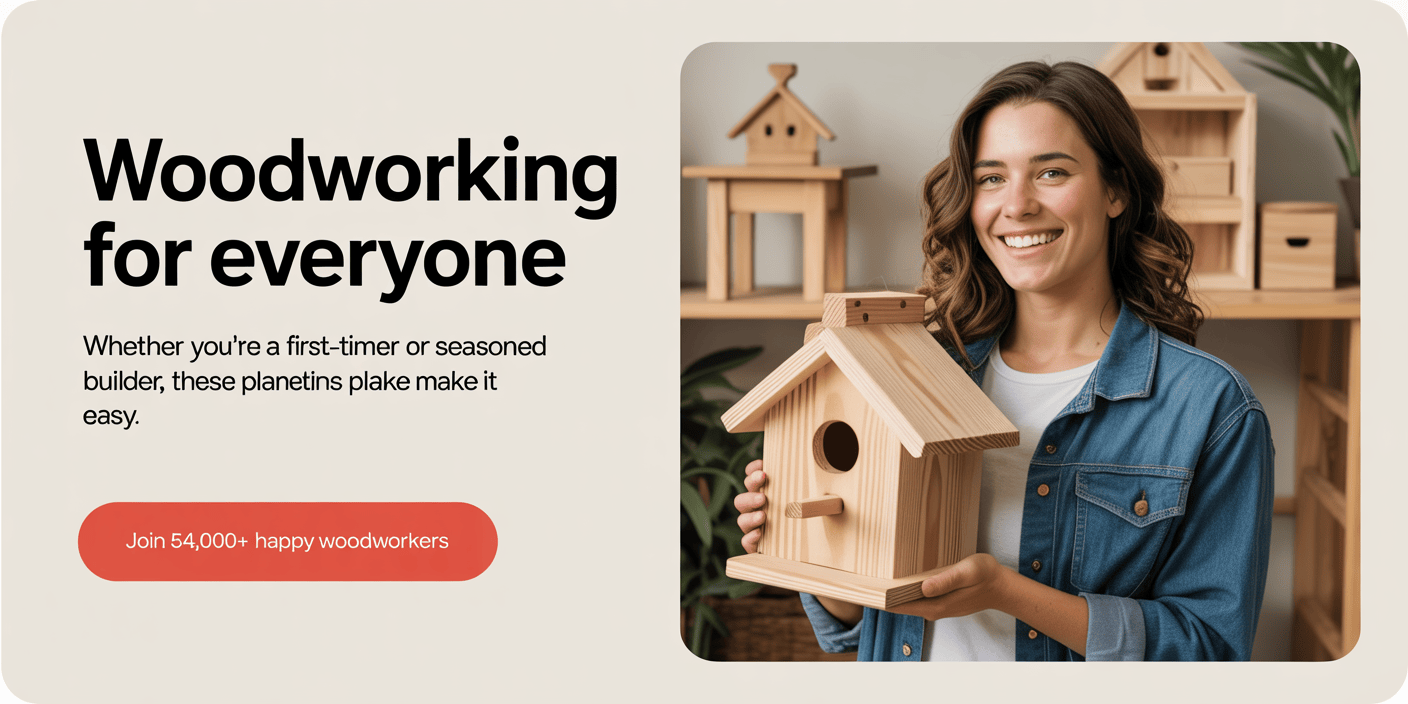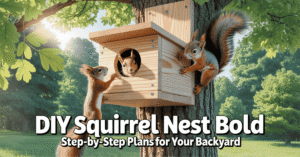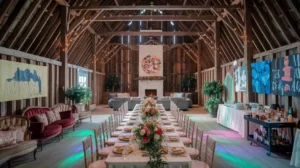Did you know that nest boxes can double the local wildlife in your yard? Squirrels love them when natural homes are scarce. Your design choice can help a squirrel family find shelter this year.
This guide shows you how to make squirrel nest boxes for U.S. backyards. You can build a rustic wooden box in a weekend or a modern one that withstands harsh weather conditions. Birdhouses inspire each design, so you’ll feel at home if you’ve built those before.
Discover squirrel house designs that fit your garden perfectly. We also have ideas for shelters that can handle rain, heat, and snow. Choose eco-friendly options like CJ Wildlife’s WoodStone line or FSC-certified wood to support animals and forests.
For a fun twist, try a “Hobbit” style with bark and moss. It makes the box blend into your plants. Whether you like a birch log look or something modern, these designs focus on function and style.
By the end, you’ll know what to build, buy, and how to choose materials for your climate. Your yard will be a safe, reliable shelter all year.
Key Takeaways
- Choose a squirrel nest box design that fits your climate and your trees, not just your style.
- Classic wood, birch log looks, and modern wildlife box materials all boost durability and comfort.
- Eco-friendly squirrel box builds using FSC-certified wood support sustainable forests.
- Decor touches—like bark and moss—help a squirrel house for garden spaces blend with landscaping.
- Backyard squirrel shelter ideas work best when paired with safe placement and seasonal care.
- Borrow proven birdhouse principles for ventilation, drainage, and predator-smart entrances.
Why Nest Boxes Matter for Backyard Wildlife and How Squirrels Use Them
Nest boxes provide safe, dry spots where yards often lack trees. By using smart squirrel shelter ideas and durable builds, you offer local wildlife a stable home. This is where the best squirrel nest box plans really come in, turning simple wood into a real habitat.
Built to last is key. FSC-certified cedar or pine with a sloped roof stands up to storms. Strong hangers and tight joins keep it draft-free, supporting healthy squirrel behavior and reducing stress in bad weather.
Squirrel nesting habits and year‑round shelter benefits
Squirrel nesting habits change with the seasons. In spring, females look for a clean, enclosed space for their kits. In summer, boxes offer shade and a quiet place to rest. Clear, practical squirrel shelter ideas meet these needs with ample floor space, drainage, and ventilation.
As fall winds rise, squirrels cache food and rest more often. A snug box supports daily roosting and saves energy. In winter, group roosts cut heat loss. Well-insulated designs based on the best squirrel nest box plans keep interiors warmer and safer.
How nest boxes support biodiversity alongside bird houses
Adding a squirrel box next to bird-friendly yards creates layers of shelter, not conflict, when well spaced. You can place bird houses for chickadees and wrens on separate trees and orient the squirrel box away from those flight paths.
This setup spreads activity across your yard. It encourages natural behaviors, from squirrel nesting behavior to songbird feeding, while lowering competition for cavities. Thoughtful spacing and entry placement help both groups thrive.
Seasonal use: breeding, roosting, and cold‑weather refuge
In breeding season, a quiet interior and climb-friendly access help mothers raise litters with less disturbance. Through late summer and fall, boxes serve as daily roosts, keeping animals dry after rain and cool during heat.
Cold snaps turn boxes into vital refuges. Extra wall thickness, an offset entrance, and a deep bedding layer reduce drafts. When you follow the best squirrel nest box plans and adapt them with simple squirrel shelter ideas, the same structure supports safe breeding, steady roosting, and warm winter nights.
Backyard Placement Tips for Safe, Weather‑Smart Squirrel Houses
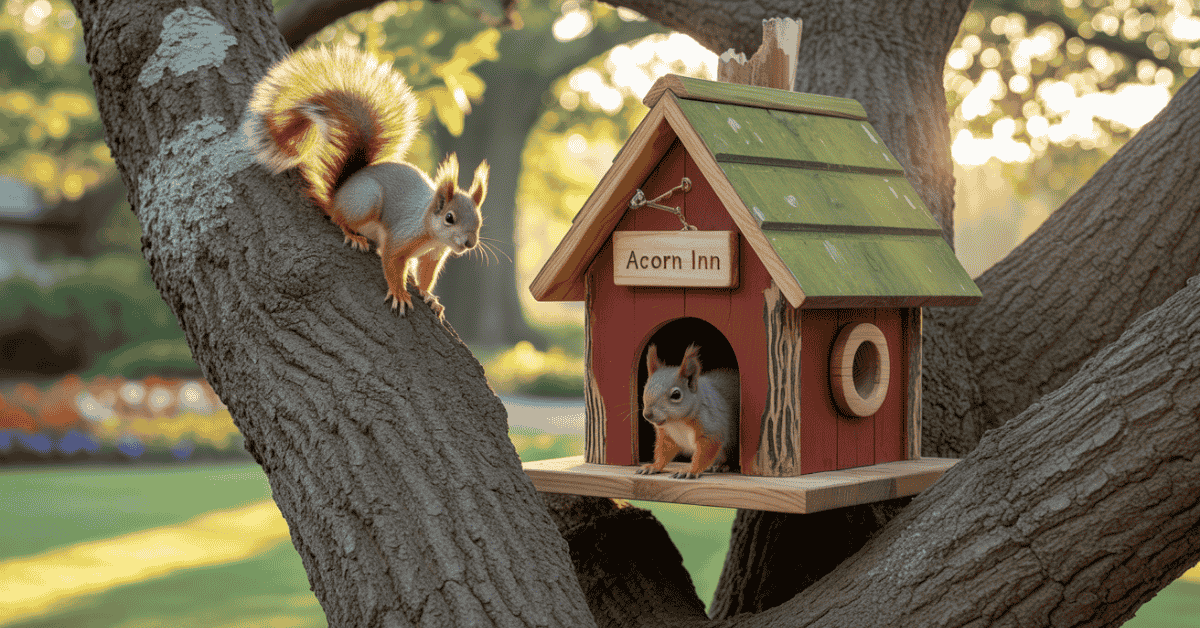
You can set up a squirrel house DIY to work with local weather and keep wildlife safe. Place boxes where activity is calm and human traffic is light. These backyard squirrel shelter ideas help reduce stress while improving comfort year‑round.
Ideal height, orientation, and wind protection
Mount the box 2–3 meters high, about 6.5–10 feet. Face the entrance to the north or east to limit heat and glare. A forward‑sloping roof sheds rain, and a site shielded by foliage or a wall cuts wind. If you’re learning how to build a squirrel nest box, plan these angles before you drill the first screw.
Keeping entrances out of direct sun and away from predators
Choose filtered light over full sun to avoid overheating. Keep obvious climbing routes, like low limbs or fences, out of reach near the entrance. Avoid sightlines that give cats, raccoons, or crows a clear view. These backyard squirrel shelter ideas keep occupants calm and improve survival.
Tree‑friendly mounting methods and spacing considerations
Use rust‑free aluminum nails or cushioned wire loops that won’t girdle bark. Leave slack for trunk growth, and check fasteners each season. Space multiple boxes at least 10 meters apart to reduce conflict. This squirrel house DIY approach scales well when you add more habitat across your yard.
| Placement Factor | Best Practice | Why It Works | Pro Tip |
|---|---|---|---|
| Height | 2–3 m (6.5–10 ft) | Limits disturbance and deters pets | Use a stable ladder and pre‑drill to protect bark |
| Orientation | Face north or east | Reduces heat and glare for steady temps | Add a slight roof overhang to block driving rain |
| Wind Protection | Sheltered by foliage or a wall | Use a stable ladder and pre‑drill to protect the bark | Pick leeward sides based on prevailing winds |
| Predator Buffer | Keep clear of low branches and fences | Removes easy routes for cats and raccoons | Use a smooth pole sleeve if mounting on a post |
| Tree Health | Aluminum nails or padded wire | Prevents bark damage and girdling | Leave expansion slack for tree growth |
| Spacing | 10 m (33 ft) between boxes | Lowers territorial stress | Stagger heights to diversify nesting choices |
| Site Variety | Tree, wall, or pole | Matches different yard layouts | Blend with how to build a squirrel nest box plans for quick installs |
Materials and Durability: Rustic Wood, Birch Logs, and Modern Composites

You want a squirrel house for your garden that can handle storms and heat. The material you choose affects maintenance, safety, and comfort. Look for sturdy options that keep water out, stay warm, and resist rot while being good for wildlife.
Tip: Choose FSC-certified lumber or durable composites for a long-lasting, eco-friendly option.
Rustic wooden nest box benefits and weatherproofing ideas
A rustic wooden nest box is breathable, temperature-buffering, and natural-looking. Opt for cedar or cypress for rot resistance. Add a roof that slopes forward and overhangs to keep rain off the seams.
Seal joints with exterior-grade caulk safe for wildlife. Use stainless screws. Make the roof or a side panel hinged for easy cleaning each season.
If painting, use exterior-only, low-VOC coatings. This keeps the squirrel house dry and protects air quality.
Birch log styles for a natural, eco-friendly look
Birch log designs blend into the surroundings, offering a natural, eco-friendly squirrel box. The thick walls provide insulation and dampen wind.
Many log boxes are one-piece, so plan for a removable cap or hidden side plate for cleaning. Smooth the entry rim to prevent splits and add drainage holes for heavy rain.
Keep finishes simple to show off the pale bark. This natural look fits well with native plants.
Modern wildlife box options inspired by wood-concrete durability
A modern wildlife box can draw from wood-concrete blends used in conservation. Hybrid panels offer strength, stable temperatures, and long life in exposed areas.
Think about composite walls with textured interiors for grip and a tough outer shell. Add cross-vent holes high on the sides and a recessed entrance to reduce wind and sun.
These designs work well with recycled fasteners and metal hangers. They create a squirrel house for your garden that lasts through the seasons.
- Wood: Cedar or cypress; hinged access; overhanging roof for a rustic wooden nest box.
- Log: Birch cylinder; removable cap; discreet drainage for an eco-friendly squirrel box.
- Composite: Hybrid panels; recessed entrance; long-wear hardware for a modern wildlife box.
Rustic to Modern Aesthetics: Decorative Backyard DIY Ideas

You can make a squirrel house DIY that fits your garden’s style. Mix beauty with function by using the right finishes and designs. These ideas keep the entry safe, the roof dry, and look nice.
Hobbit‑style rustic cladding with bark and moss accents
Start with a strong box and add bark siding from a fallen tree. Press the bark like shingles, leaving gaps for air. Use dry bark and a safe adhesive for wildlife.
Top the roof with moss for a soft look. Keep moss away from the entrance to avoid moisture. This DIY makes the box blend with plants and honours classic designs.
Clean‑lined modern facades for a contemporary garden
For sleek looks, use smooth cedar or composite panels. Hide screws with wood plugs and choose muted colors. This matches stone paths and steel planters.
These ideas work for modern patios and mid-century yards. Use a clean front and a recessed entry to keep predators out. This makes your DIY practical and stylish.
Finishes that blend with landscaping and native plantings
Use low-VOC, safe oils or water-based stains. Test colors next to plants like coneflower or switchgrass. Choose earth tones to blend with foliage.
Recoat edges each fall and use stainless fasteners for durability. With the right colors and materials, your DIY will look great and last long.
squirrel nest box designs

There are three main types of squirrel nest box designs: classic wood, natural birch log, and modern composites. Each type focuses on shelter, airflow, and easy upkeep. This way, you can find the perfect match for your yard and the weather.
Classic wood designs use cedar or redwood with a roof that slopes forward to keep rain off. Using FSC-certified boards makes it eco-friendly. A hinged side makes cleaning easy. These designs can be painted or stained and are light enough for trees.
Birch log designs are rustic and blend well with barky trunks. They are good at blocking sound and heat. But they often don’t have easy-to-clean panels. Make sure to pre-drill for ventilation and place them under an eave or leaf canopy to avoid direct sun.
Modern composites are inspired by wood-concrete bird boxes. They have dense walls and last a long time. They look great in modern gardens. Use drainage kerfs, stainless screws, and a gasketed lid to keep it dry.
For looks, you can add bark and moss for a “Hobbit” feel or go for a clean, minimalist look. Both styles fit well with plans that focus on sheltered entries and strong corners.
DIY builders can use basic tools to make squirrel nesting boxes for their local climate. In wet areas, add more roof overhang. In cold places, make walls thicker and seal seams well. These steps help your box last longer without losing its appeal.
Before starting, sketch the inside layout, mark a service panel, and think about wind direction. This planning ensures your design works well from start to finish and reduces future upkeep.
DIY Squirrel Nest Box: Tools, Dimensions, and Build Steps
A good diy squirrel nest box starts with solid materials and simple joins. You can use birdhouse methods but make them bigger for squirrels. This makes the build easy and strong against the weather.
Before you begin: Choose FSC-certified cedar or pine, and exterior-grade screws. Use rust-free hinges and latches, and a weatherproof roof coating. Don’t forget sturdy hangers or wire loops for mounting, and tools like a square, tape measure, saw, and drill for accurate cuts.
How to build a squirrel nest box with basic carpentry
Cut panels to sizes that squirrels like: 12–14 inches tall, 10–12 inches deep, and 9–10 inches wide. Use a square to mark pieces for flush edges. Then, pre-drill and screw together for tight joints.
Make the roof angle forward by 1–1.5 inches to keep rain off. Seal the ends and add cleats or patches for squirrels to climb. Keep your design simple and strong if you’re doing a squirrel house DIY.
Mount the box using aluminium nails or wire loops around the trunk. Follow wildlife groups’ advice on height and direction to avoid winds.
Entry hole sizing, interior space, and ventilation
Drill a 2.5 to 3-inch round entrance hole, a few inches below the roof, to block rain. Make the inside roomy but snug to keep warm and reduce drafts.
Put small ventilation gaps under the eaves and 3–4 drainage holes in the floor. Shade the entrance to reduce heat stress. These steps help your diy squirrel nest box stay safe all year.
Hinged roof or side panels for inspection and cleaning
Make a hinged roof or side panel using rust-free hardware, then secure it with a latch to keep out raccoons. This lets you clean out old nests and check for moisture after breeding season.
Birch log builds often lack clean-out doors, so plan carefully. A squirrel house DIY with easy access will last longer and stay healthy for wildlife.
Best Squirrel Nest Box Plans and Styles for Different Backyards
You want a squirrel house for your garden that fits your space, withstands weather, and is safe for wildlife. The best plans offer a small footprint, good airflow, and strong materials. Choose materials that match your yard’s look and are easy to maintain.
Compact designs for small urban spaces
Opt for a single-chamber box for tight spots and balconies. Mount it on a wall or pole, and face the entrance north or east to avoid heat. Use exterior-grade screws, galvanized hangers, and a sloped roof for water runoff.
These designs fit well with brick, vinyl, or cedar siding. Use 1×8 lumber for easy cuts, and a small clean-out panel for quick checks without stress.
Multi-chamber boxes for family groups in larger yards
For bigger areas, go for two or three chambers behind one weatherproof facade. Internal dividers create cozy spots while sharing warmth. Add baffles at the entrance to block wind and give shy juveniles a safe place.
Choose durable materials like rustic cedar, birch-log cladding, or wood-concrete-inspired panels. These plans offer more room without crowding the canopy and look natural in a wildlife-friendly landscape.
Convertible boxes that double as winter roosts
Build a box that changes with the seasons. Use removable baffles or insulated panels to warm it up in winter, then remove them in spring for nesting. A hinged roof or side makes maintenance quick.
This flexible design fits many styles and is practical for windy garden corners. Use non-toxic finishes and weatherproof screws to extend its life.
| Backyard Fit | Core Features | Materials | Mounting & Orientation | Why It Works |
|---|---|---|---|---|
| Small Urban | Single chamber, clean-out panel, sloped roof | 1×8 cedar or pine, galvanized hardware | Wall or pole; face entrance north/east | Compact footprint limits heat and saves space |
| Large Yards | Two–three chambers, wind baffles, deep overhang | Cedar, birch-log cladding, wood-concrete-style panels | Tree mount with straps; shaded mid-canopy | Multiple roosts support family groups and reduce drafts |
| All-Season Convertible | Removable baffles, optional insulation, hinged access | Cedar shell, cork or fiberboard inserts, stainless screws | Tree or fence; sheltered from prevailing winds | Shifts from warm winter roost to open spring nest |
Tip: Keep cuts straightforward and use standard lumber sizes for easy weekend projects, no matter the yard size.
Squirrel Nesting Material and Behavior: What to Provide and What to Avoid
You can help squirrels by giving them simple things and not disturbing them. Make sure the box has good airflow and handle it gently. Providing the right nesting material lets squirrels create a cozy bed by themselves.
Safe natural materials that encourage nesting
Place loose, dry leaves, small twigs, and shredded bark in a basket or feeder. Don’t fill the box too much. Let squirrels carry each piece to keep it dry.
Use clean, seed-free straw or dried grasses. Avoid cedar shavings and use thin layers of untreated aspen or pine. Keep your shelter ideas simple for the squirrels to adjust to weather changes.
What to avoid to prevent pests and moisture build‑up
Avoid synthetic fluff, dryer lint, treated fabrics, and string. They can hold moisture, cause tangles, and attract mites. Don’t add damp materials or food as they attract wasps and ants and can mold.
Don’t overfill the box. Keep it ventilated and ensure drainage for airflow. Clean it out seasonally to remove old nests and pests, then let new material accumulate outside.
Observing squirrel nesting behavior without disturbance
Watch from a distance with binoculars instead of opening the box. Frequent visits can scare them away, which is bad during breeding. Place materials near the entrance, but don’t stay long.
Check during quiet times and look for signs like carrying leaves or soft calls. This way, you can monitor without stressing them and improve your shelter ideas.
Maintenance, Cleaning, and Long‑Term Care for Your Squirrel House
Keeping your squirrel box in good shape is key. It ensures a safe, dry, and welcoming home for wildlife. Whether you made it yourself or bought an eco-friendly one, regular care is crucial. Here are some tips for both DIY and more advanced squirrel nest boxes.
Seasonal cleaning routines and pest prevention
Do a deep clean after the breeding season and when it’s quiet. Wear gloves and open the box to remove old nesting material. This helps prevent mites and wasps.
If your box is a birch log that doesn’t open, plan for a replacement or use a removable cap. Use a mild, wildlife-safe cleaner and let it dry completely. Make sure the entry and vents are clear for good airflow. Keep a record of each cleaning to track seasonal changes.
Weatherproofing tips and hardware checks
Start by checking the roof. Reapply a durable, wildlife-safe finish if water no longer beads up. Also, check the top to ensure it still sheds rain.
Look at the hangers, hinges, and screws each season. Use rust-free materials like aluminium nails or wire loops to protect the tree. Make sure closures are tight to keep raccoons out.
When to repair, refurbish, or replace DIY boxes
Check your box’s structure every year. If it’s made from a durable material, it might last longer with minimal care. Wooden DIY boxes might need more frequent repairs, like new hinges or sealant.
Fix small issues if the walls are solid and the inside is clean and dry. But if you see damage, mold, or loose parts, it’s time for a new box. When planning future upgrades, consider adding a hinged panel and better drainage for easier maintenance.
🌳 Ready to Build Your Own Squirrel Nest Box (and More)?
If today’s nest box designs sparked your DIY spirit, why stop here? With Ted’s Woodworking, you’ll unlock 16,000+ step-by-step woodworking plans—perfect for projects big and small.
✨ Here’s why DIYers love Ted’s Woodworking:
- ✅ 16,000+ detailed projects with step-by-step instructions
- ✅ Exact cutting & materials lists (save money & reduce waste)
- ✅ Beginner-friendly AND pro-level plans
- ✅ Detailed blueprints & 3D schematics—no guesswork!
- ✅ Lifetime access + free monthly new plans
- ✅ BONUS: 150 woodworking videos, CAD viewer, and guides
👉 Click here to get instant access to Ted’s Woodworking for just $67 (one-time only)!
Build your next squirrel house—or your dream backyard project—with confidence today.
Conclusion
You now know how to build, place, and care for a squirrel house that works all year. Use durable, FSC-certified wood or wood-concrete builds. Add a weatherproof roof and mount it securely.
Face the entrance north or east to avoid harsh sun and wind. Keep it high to reduce predator risk. These steps will make your backyard squirrel shelter ideas successful.
Choose a design that fits your space. Rustic wood is great for cottage gardens, while birch log styles fit natural plantings. A modern wildlife box adds a clean, long-lasting look.
You can add bark or moss for a woodland-style finish. This looks ages well. The goal is to create a box that looks good and lasts through all seasons.
Seasonal cleaning and quick checks keep your box ready. Dry nesting material supports breeding in spring and roosting in summer and fall. It also provides warm refuge in winter.
Thoughtful placement and upkeep reduce pests and moisture. This gives you safe, close-up views of natural behavior.
DIY momentum is on your side. Start small and follow local species’ dimensions. Refine as you learn. Over time, your squirrel nest box designs and modern wildlife box will boost biodiversity and support native trees.
Your yard will become a reliable habitat you enjoy every day.
FAQ
What are the best squirrel nest box designs for a typical U.S. backyard?
For a U.S. backyard, consider three main designs. Classic wooden boxes are easy to make and maintain. Birch-log styles blend into the foliage for a natural look. Modern, composite-inspired designs, like CJ Wildlife’s WoodStone, last long and keep temperatures stable.
How do squirrel nesting habits shape the size and layout of a box?
Squirrels use boxes for breeding, day roosts, and winter refuge. They need a spacious chamber, a safe entrance, and interior grip. Add rough walls or cleats for climbing. Ensure good airflow and a sloped roof to keep bedding dry.
What entrance hole size should you use for a squirrel house?
Choose an entrance hole of 3 to 3.5 inches in diameter. This size is perfect for common backyard tree squirrels and keeps out larger predators. Place the hole a few inches below the roofline and consider a short tunnel for extra protection.
Where should you mount a squirrel nest box for safety and comfort?
Mount the box 6.5 to 10 feet high, facing north or east to avoid overheating. Choose a spot that’s sheltered from winds and has a slight roof pitch to shed rain. Avoid obvious branches below the entrance to prevent cat ambushes.
What tree‑friendly mounting methods are best?
Use rust-free aluminium nails or sturdy wire loops with a spacer. Avoid tight straps that can harm the tree. Check fasteners annually to ensure the box remains level and quiet.
Which materials last longest outdoors for a DIY squirrel nest box?
FSC-certified exterior-grade wood is a reliable choice. Add a weatherproof finish and a roof overhang. For extra durability, consider composite-inspired panels that mimic wood-concrete.
Are birch log styles practical or just decorative?
Birch log boxes are both practical and decorative. They blend with natural plantings and offer good camouflage. Design a removable cap or inset panel for easy interior service.
Can you create a rustic “Hobbit” look for a squirrel house?
Yes, you can. Start with a wooden base, then clad it with fallen bark and dry moss. Seal edges to shed water. The natural textures help the box blend into a woodland garden.
What’s a simple plan for a DIY squirrel nest box?
Use 3/4-inch rot-resistant boards to create a deep chamber with a sloped roof. Drill a 3–3.5 inch entrance, add interior cleats, and hinge the roof or a side for cleaning. Seal seams, add vents, and drill floor drain holes.
How do you size the interior space?
Provide a chamber roughly 8–9 inches wide, 10–12 inches tall, and 10–12 inches deep. This size allows for nesting material and growing kits while keeping the heat stable in winter. Scale up for larger yards.
What is the best orientation and spacing when you have multiple boxes?
Face entrances north or east and keep boxes 33 feet apart to reduce territorial stress. Stagger height and cover to cut down on competition and improve wildlife use.
What nesting material should you provide?
Offer dry leaves, small twigs, and a bit of clean, unscented natural fibre nearby. Squirrels prefer to arrange their own bedding. Keep materials dry to avoid mold and mites.
What materials should you avoid inside a squirrel house?
Avoid synthetic fluff, treated fabrics, dryer lint, and damp materials. These can trap moisture, harbor pests, and break down into harmful fibers. Don’t over-pack the interior; leave room for airflow.
How can you observe squirrel nesting behavior without disturbance?
Watch from a distance with binoculars and avoid opening the box during active use. Limit close activity around the mounting tree. If using a camera, position it outside and out of sightlines from the entrance.
How often should you clean a squirrel nest box?
Clean once the breeding season ends and again before winter if the box is inactive. Remove old bedding and debris to reduce mites and wasps. Wear gloves, brush out the interior, and let it dry before closing.
What weatherproofing upkeep should you plan?
Re-coat roofs with a wildlife-safe exterior finish as needed, ensuring the roof sheds water forward. Check hinges, latches, hangers, and screws each season. Reseal seams that show gaps to keep wind and rain out.
When should you repair or replace a DIY squirrel house?
Replace if the structure is warped, leaks persist, or interior wood is soft with rot. Patch minor splits, tighten hardware, and refresh finishes when wear is light. Composite-inspired builds generally last longer than standard wood.
Are compact squirrel shelter ideas suitable for small urban gardens?
Yes. Choose a single-chamber, wall-mount box with a modest footprint and a 3–3.5 inch entrance. Face it north or east on a shaded wall or small tree, and use sturdy hangers to control vibration in windy microclimates.
What are multi-chamber squirrel shelter ideas for larger yards?
Build a wider facade with two to three connected chambers behind one weatherproof exterior. Each chamber gets vents and drains, with a single protected entrance or staggered entrances. This supports family groups and offers flexible roosting.
How do convertible boxes work for winter roosting?
Add removable baffles or insulated panels for cold months, then open space for breeding season. Keep vents small in winter and larger in summer. Always maintain a dry floor with clear drainage.
How do squirrel boxes fit with bird houses without causing conflicts?
Space them apart, vary heights, and orient entrances away from each other. Provide ample cover and food sources in the landscape. This mirrors bird-box placement wisdom and helps both groups use your garden without stress.
What finishes look good and hold up outdoors for a DIY squirrel nest box?
Use low-VOC exterior oils or paints in muted, nature-matching colors. Focus on extra roof protection and concealed fasteners for a clean look. Smooth, modern cladding echoes composite bird boxes, while bark and moss accents create rustic charm.
What are the best squirrel nest box plans for first-time DIYers?
Choose a straightforward wooden build with square cuts, a hinged roof, and standard exterior screws. Use FSC-certified lumber, rust-free hardware, and a weatherproof roof coating. Follow proven nest-box logic for vents, drains, and safe orientation.
How do you ensure your squirrel house supports biodiversity?
Pair boxes with native plantings, staggered canopy layers, and spaced bird houses. When you offer varied shelter and reduce competition, you create a resilient backyard habitat that supports more wildlife year-round.
